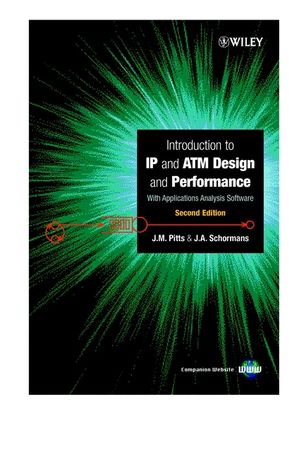Introduction to IP and ATM Design and Performance: With Applications Analysis Software, 2nd EditionISBN: 978-0-471-49187-3
Hardcover
320 pages
February 2001
 This is a Print-on-Demand title. It will be printed specifically to fill your order. Please allow an additional 15-20 days delivery time. The book is not returnable.
|
||||||
Many engineers and students experience difficulty in making sense of issues associated with IP and ATM teletraffic techniques. This is partly because of the subject itself: networks are flexible, complicated, and still evolving. However, some of the difficulties arise because of the advanced mathematical methods that have been applied to provide analytic tools. The research literature abounds with many and varied analytical approaches applied to a bewildering array of traffic mixes, switch designs and traffic control mechanisms.
Introduction to IP and ATM Design and Performance provides: an introduction to IP and ATM traffic issues; performance evaluation using analysis and simulation; presentation of key formulas describing traffic and queueing behaviour and practical examples, graphs and tables for the design of wide area networks. Particular areas addressed include the fundamental traffic control functions: connection admission control; usage parameter control; priority control; queue scheduling and buffer management.
Features include:
· Clear Expansion of typical traffic and queueing behaviour
· Simple exposition of fundamental performance evaluation methods and techniques for ATM and IP
· All formulas are available in MathCAD files on the related web-site
· Avoids the use of advanced mathematical methods
This simple intuitive approach is easy to follow and will benefit both engineers in the telecommunications industry and undergraduate and postgraduate students in telecommunications, communications engineering, computer engineering courses.
Introduction to IP and ATM Design and Performance provides: an introduction to IP and ATM traffic issues; performance evaluation using analysis and simulation; presentation of key formulas describing traffic and queueing behaviour and practical examples, graphs and tables for the design of wide area networks. Particular areas addressed include the fundamental traffic control functions: connection admission control; usage parameter control; priority control; queue scheduling and buffer management.
Features include:
· Clear Expansion of typical traffic and queueing behaviour
· Simple exposition of fundamental performance evaluation methods and techniques for ATM and IP
· All formulas are available in MathCAD files on the related web-site
· Avoids the use of advanced mathematical methods
This simple intuitive approach is easy to follow and will benefit both engineers in the telecommunications industry and undergraduate and postgraduate students in telecommunications, communications engineering, computer engineering courses.



